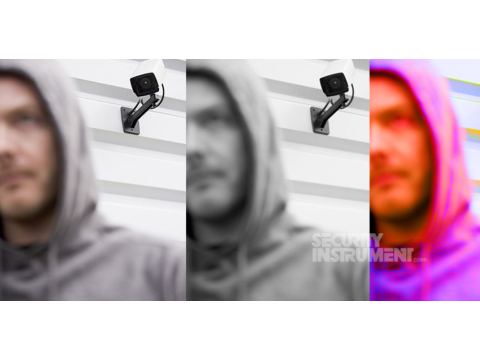Choosing Between Color and Black-and-White Cameras
The choice between color and black-and-white surveillance cameras depends on several factors, including the purpose of the surveillance, environmental conditions, and budget constraints.
Color Surveillance Cameras
Advantages:
Enhanced Detail:
- Color helps identify objects, vehicles, and individuals more accurately, especially in investigations or incident reporting.
Software Integration:
- Advanced features like motion detection and dynamic range enhancement (WDR) improve system efficiency.
Limitations:
- Lower Light Sensitivity:
- Require a minimum of 0.2–3 lux for optimal performance, making them less effective in low-light conditions.
- Higher Cost:
- Both hardware and installation costs are typically higher than black-and-white models.
Best Applications:
- Indoor areas with stable lighting.
- Environments requiring high detail, like retail spaces or financial institutions.
Black-and-White Surveillance Cameras
Advantages:
- Superior Light Sensitivity:
- Operate effectively at 0.01 lux, ideal for low-light environments.
- Lower Cost:
- Budget-friendly and easier to deploy in large-scale projects.
Limitations:
- Lack of Color Details:
- May struggle with object identification in scenarios requiring color-specific details.
Best Applications:
- Outdoor monitoring with infrared (IR) illumination.
- Nighttime or low-light surveillance in parking lots, warehouses, and remote facilities.
Comparing Key Features
Resolution and Noise:
- Black-and-white cameras generally outperform color models in low-light conditions, offering cleaner images with fewer distortions.
Dynamic Range (WDR):
- Both types benefit from WDR, though color models may offer better performance with advanced hardware solutions.
IR Illumination:
- Black-and-white cameras excel in IR environments, delivering clear images even in complete darkness.
Weather Resistance:
- Outdoor cameras, regardless of type, require IP66-rated weatherproof housings to withstand environmental factors.
Outdoor Surveillance Cameras
Outdoor environments demand rugged designs and additional features to ensure reliability.
IR Illumination:
- Supports clear night vision, with some black-and-white models capable of monitoring up to 150 meters.
PTZ Mechanisms:
- PTZ cameras (pan-tilt-zoom) enhance coverage with 360° rotation and customizable preset zones.
Weatherproof Housings:
- Built with high-strength metal, often equipped with anti-vandal protection, and suitable for extreme climates.
Conclusion
Color and black-and-white cameras cater to distinct surveillance needs. A hybrid system utilizing both types can provide comprehensive coverage, balancing cost, performance, and specific monitoring requirements. Selecting the right camera depends on evaluating your priorities, such as lighting conditions, level of detail needed, and environmental challenges.

